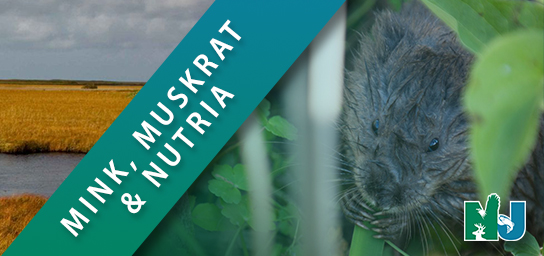Technically, the term furbearer includes all mammals, all of which, by definition, possess some form of hair. Typically, however, wildlife managers use the term to identify mammal species that have traditionally been trapped or hunted primarily for their fur. North American furbearers are a diverse group, including both carnivores (meat-eating predators) and rodents (gnawing mammals). Most are adaptable species ranging over large geographic areas. In New Jersey they include beaver, bobcat, coyote, fisher, red fox, gray fox, mink, muskrat, nutria, opossum, raccoon, river otter, skunk, and weasels.
Bobcats are classified as endangered in New Jersey and are widely distributed across the northern part of the state. Fishers are returning naturally to New Jersey following reintroduction efforts in New York and Pennsylvania, and have been documented in several northern New Jersey counties. There is no open trapping season for bobcat or fisher.
Most furbearers possess two layers of fur: a dense, soft underfur that provides insulation and water repellent qualities; and an outer layer of longer, glossy guard hairs that grow through the underfur, protecting it from matting and abrasion. A fur is said to be prime when the guard hairs are at their maximum length and the underfur is at its maximum thickness.
Reporting Sightings of Beaver or River Otter, Coyote, Grey Fox, Fisher, Nutria, Muskrat, or Weasel
Please complete the Furbearers Survey.
 Official Site of The State of New Jersey
Official Site of The State of New Jersey


